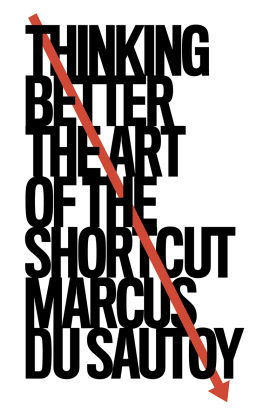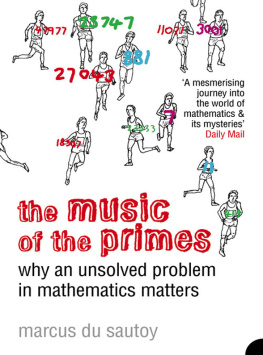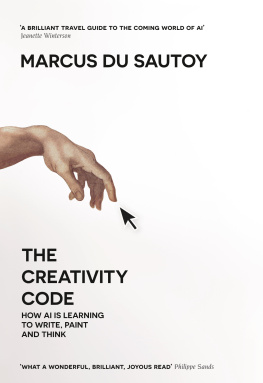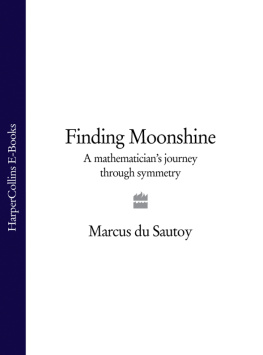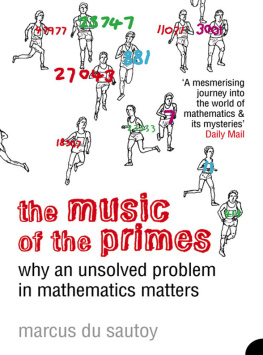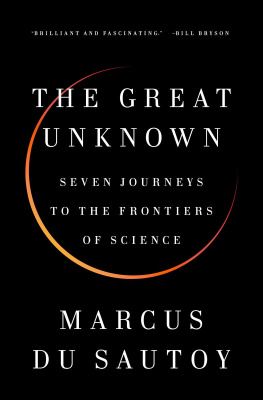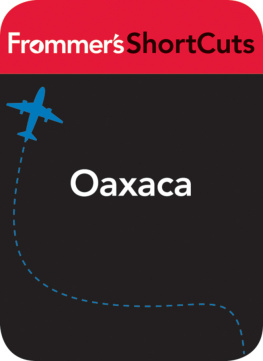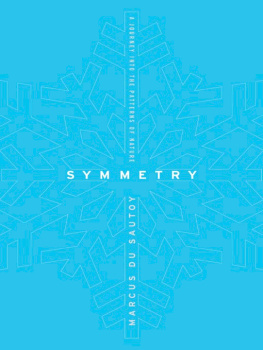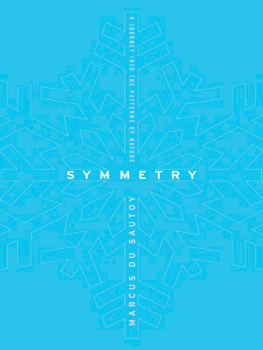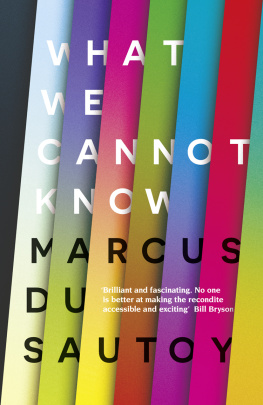Contents
Contents
Guide
THINKING BETTER
The Art of the Shortcut
Marcus du Sautoy

4th Estate
An imprint of HarperCollinsPublishers
1 London Bridge Street
London SE1 9GF
www.4thEstate.co.uk
HarperCollinsPublishers
1st Floor, Watermarque Building, Ringsend Road
Dublin 4, Ireland
This eBook first published in Great Britain by 4th Estate in 2021
Copyright Marcus du Sautoy
Cover design by Steve Leard
Marcus du Sautoy asserts the moral right to be identified as the author of this work
A catalogue record for this book is available from the British Library
Figures in the book redrawn by Martin Brown, from files generated by the author or those in the public domain. Figure 5.1 reproduced courtesy of Andrew Viner. Figure 5.5 created by Joaquim Alves Gaspar. Figure 5.14 taken from https://commons.wikimedia.org/wiki/File:Doughnut_(economic_model).jpg, uploaded by DoughnutEconomics, published under Creative Commons Licence. Figure 9.5 created by Arpad Horvath.
All rights reserved under International and Pan-American Copyright Conventions. By payment of the required fees, you have been granted the non-exclusive, non-transferable right to access and read the text of this e-book on-screen. No part of this text may be reproduced, transmitted, down-loaded, decompiled, reverse engineered, or stored in or introduced into any information storage and retrieval system, in any form or by any means, whether electronic or mechanical, now known or hereinafter invented, without the express written permission of HarperCollins
Source ISBN: 9780008393915
Ebook Edition August 2021 ISBN: 9780008393939
Version: 2021-07-05
To all mathematics teachers
but especially Mr Bailson who showed me
my first mathematical shortcut
You have a choice. The obvious path is a long slog, with no beautiful vistas on the way. It is going to take you for ever and sap all your energy but it will at least eventually get you to your destination. But there is a second path. Youve got to be sharp to spot it veering off the main track, seemingly taking you away from your goal. Then you spot the signpost that says shortcut. This is promising a quicker, off-road route that will get you to your destination faster and with minimal energy. There might even be the chance of a stunning view on the way. Its just that you are going to have to keep your wits about you to navigate this path. Its your choice. This book is pointing you towards that second path. Its your shortcut to the better thinking youll need to negotiate this unorthodox route and to get you to where you want to go.
It was the lure of the shortcut that made me want to become a mathematician. As a rather lazy teenager, I was always after the most efficient path to my destination. Its not that I was after cutting corners. I just wanted to achieve my goal with as little effort as possible. So when my mathematics teacher revealed to me at the age of twelve that the subject we were learning in school was really a celebration of the shortcut, my ears pricked up. It started with a simple story, featuring a nine-year-old boy called Carl Friedrich Gauss. The year was 1786 and our teacher transported us back to the boys classroom in the town of Brunswick near Hanover where the young Gauss grew up. It was a small place and the local school had only one teacher, Herr Bttner, who had to somehow teach the towns one hundred children in just one classroom.
My own teacher, Mr Bailson, was a rather dour Scot who kept strict discipline, but it sounded like he was a softy compared to Herr Bttner. Gausss teacher would stride up and down the benches brandishing a cane to maintain discipline among the rowdy class. The classroom itself, which Ive subsequently visited on a mathematical pilgrimage, was a drab room with a low ceiling, little light and uneven floors. It felt like a medieval prison and Bttners regime seems to have matched the setting.
The story goes that during one arithmetic lesson Bttner decided to set the class a rather tedious task to occupy them so that he could grab forty winks. Class I want you to add up the numbers from 1 to 100 on your slates, instructed Bttner. As soon as you are done, bring your slates to the front of the class and place them on my desk.
Before the teacher had even finished the sentence, Gauss was on his feet and had placed his slate on the desk declaring in low German: Ligget se. There it is. Bttner looked at the boy, shocked at his impertinence. The cane in Bttners hand quivered but he decided to wait until all the students had submitted their slates for inspection before upbraiding the young Gauss. Eventually the rest of the class finished and Bttners desk was a tower of slates covered in chalk and calculations. The teacher began to work his way through the pile, starting with the last slate that had been placed on top. Most of the calculations were wrong, the students having invariably made some arithmetic slip on the way.
Eventually Bttner arrived at Gausss slate. He was bracing himself for a rant at the young upstart but as he turned over the slate he saw the correct answer: 5050. With no extraneous calculation. Bttner was shocked. How had this young boy found the answer so quickly?
The story goes that the precocious young student had spotted a shortcut that helped him avoid the hard work of actually doing much arithmetic. What he had realised was that if you add up the numbers in pairs:
1 + 100
2 + 99
3 + 98
the answer was always 101. But there were 50 pairs. Hence the solution was
50 101 = 5050
I remember being electrified by this story. To see Gausss insight into how to shortcut all this horribly tedious and labour-intensive work was a revelation.
Although the story of Gausss schoolroom shortcut is probably more legend than fact, it nonetheless captures beautifully an important point: mathematics is not a subject of tedious calculation as so many think, but rather one of strategic thinking.
That, my dear students, is mathematics, announced my teacher. The art of the shortcut.
Hello, my twelve-year-old self thought tell me more!
Getting further faster
Humans use shortcuts all the time. We have to. We have a short amount of time to make decisions. We have limited mental capacity to navigate complex problems. One of the first strategies that we developed as a pathway to solving complicated challenges was the idea of heuristics: the process by which we make problems less complex by ignoring some of the information thats coming into the brain, either consciously or unconsciously.
The trouble is that most of the heuristics that humans use lead to bad judgements and biased decisions, and generally arent fit for purpose. We might know one thing from experience and then try to extrapolate all of our other problems by comparing them to this one thing we know. We judge the global by knowledge of the local. This was fine when our environment didnt extend too much beyond the small region of savannah we inhabited. But as our neighbourhood expanded, these heuristics didnt give us good ways of understanding how things worked beyond our local knowledge. This was the moment when we started to develop better shortcuts. Those tools are what today we call mathematics.
To find good shortcuts requires an ability to lift yourself out of the geography youre trying to traverse. If you are in the landscape then often you can only rely on what you see around you. Although each step feels like it is taking you in the right direction, the path that results might take you the long way round to your destination or lead you astray completely. Thats why humans developed a better way of thinking: the ability to take ourselves out of the minutiae of the task at hand and understand that there might be an unexpected path that could get us to our target more efficiently and faster.

